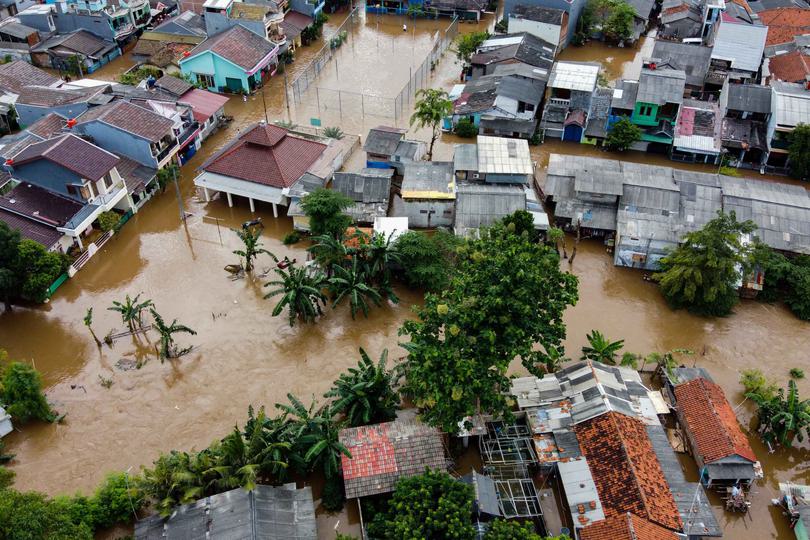
This week sees three major international conferences with the potential to shape the future of development – the G7, the IMF/World Bank Annual Meetings and the United Nations Biodiversity Conference. A common theme is how to mobilise private sector investment and innovation for development and biodiversity and climate goals. As global leaders sit down with financiers to find solutions, insurers should also get a prominent seat at the table. We argue that insurance plays five crucial roles in unlocking innovation and investment and give examples of how insurers are already helping to protect and restore nature.
Insurance is big business. Globally last year, more than $6 trillion in annual premiums were collected covering everything from cars and homes, to businesses, infrastructure construction, financial transactions, to people’s lives and medical care. These premiums helped secure investments – be it a mortgage, an investible asset or new business venture - and helped communities build back after disasters, such as the wildfires in Europe and the 28 separate billion-dollar extreme weather events seen in the USA. The total risk-bearing capacity of the global reinsurance market and index-linked securities like catastrophe bonds alone was estimated at well over $800 billion in 2023 – providing a global ‘cushion’ to disasters.
The question then is how we can better deploy this ‘risk capital’, as well as the risk knowledge of the industry, to tackle one of the main barriers to private innovation and investment in emerging markets and developing economies (EMDEs) - namely risk.
As economies grow more complex and interconnected in a world of changing climate and environmental risks, the role of insurance in supporting that growth, ensuring stability, and promoting equity will only become more critical.
Looking worldwide, the fastest growth in insurance premiums is seen in Asia, yet across most EMDEs insurance penetration (access) remains low - only 2.4% in Africa versus over 11% in North America - leaving billions of people as well as businesses without adequate financial protection against risks. This is known as ‘the protection gap’ and according to the insurance industry, this climate protection gap worldwide is estimated at 67 percent in 2023: that is, only 33 percent of the direct economic costs of climate shocks and other disasters – or $357 billion in 2023 - were insured. It can exceed 90 percent in low-income countries. The growing frequency of climate shocks, coupled with unavailable insurance, means that the world’s vulnerable communities are repeated knocked back. Research by the World Bank showed that growing disasters are threatening to push more than 130 million people into extreme poverty by 2030.
Insurance has long been an active part of the dialogue on climate adaptation and resilience in EMDEs. For example, the Insurance Development Forum (IDF) was established a decade ago as a unique public-private partnership to support the use of insurance and its related risk management capabilities. As of 2023, the IDF was working in 30 countries, had trained over 100 supervisors, invested $900,000 in open risk data and co-invested $30 million in disaster risk financing programmes in EMDEs. Relatedly, the Global Shield against Climate Risks, a V20/G7 initiative, facilitated access to financial protection that benefitted more than 230 million climate vulnerable people by the end of 2023 and a total of $9.7 billion coverage.

Aerial view of flooding at Bekasi, Indonesia
Insurance can and must do much more if we are to mobilise private capital at scale to help alleviate the climate and biodiversity crises. Beyond financial protection of communities and businesses, the wider role of insurance in enabling and catalysing investment and innovation must be leveraged. So what is the macroeconomic role of insurance?
Providing economic security
By providing quick payouts in times of crisis, insurance helps to protect and maintain economic development and stability, preventing sharp contractions in consumption and investment. Health, unemployment, and life insurance provide financial support to individuals during adverse events. Insurance also protects firms, ensuring that they can continue operations and invest (Gollier and Mahul, 2024), so maintaining jobs and growth. For governments, by helping finance the rapid recovery post disaster, insurance mitigates the cost of disasters and helps restore growth.
Boosting shared prosperity
Insurance promotes economic development primarily by encouraging capital formation and innovation. By mitigating risks, insurance allows businesses and individuals to make the investments they might otherwise avoid. It allows entrepreneurs to take risks that drive innovation. These, in turn, boosts economic productivity.
Direct investment of capital
With assets over $40 trillion, (re)insurers are important investors too, and – in the case of life insurance – play a critical role in long-term investments in sectors like infrastructure that are critical to development and sustainability. The IDF recently launched a dedicated financing facility.
Promoting redistribution and equity
Insurance, either public or private, can play a crucial role in promoting equitable economic development by protecting vulnerable populations. Nearly one in five people are at risk to climate hazards globally, meaning that they are likely to experience a severe climate shock in their lifetime. Adaptive Social Protection programs in particular have emerged in EMDEs as an effective ‘safety net’ to protect the most vulnerable people and some programs, like in Malawi, are even reinsured. By stabilizing income and consumption, insurance helps to break the cycle of poverty.
Pricing risk
Insurance also plays a wider macroeconomic role through putting a price tag on risk. This creates a risk signal to the economy and an economic incentive for households, firms or governments to manage and reduce that risk. Today, across financial markets, there is clear evidence that both climate and nature-related risks are underpriced, if not unpriced, and this contributes to inaction. For example, research by the University of Oxford showed that environmental damage could lead to a loss of GDP of 6 – 12% in the UK; this risk is not accounted for investment decisions giving little incentive to take action to reduce it through eliminating environmental degradation.
Insurance can and must do much more if we are to mobilise private capital at scale to help alleviate the climate and biodiversity crises.
While our examples have focused mainly on climate risks, there is increased recognition of the role that insurance can play also in addressing the biodiversity crisis. Target 19 of the Global Biodiversity Framework – discussed in Cali this week – aims to mobilise $200 billion a year for biodiversity. The reinsurer Swiss Re has supported the development of insurance cover for natural assets, including the Ningbo Wetlands in China and Prince Hendrick Sand Dyke in the Netherlands, helping to enable investment in these nature-based solutions. WTW has designed an ‘insurance wrapper’ for the Belize Blue Bond and is working with USAID to expand this to other countries. Howden has explored how insurance can help catalyse the growth of carbon and biodiversity markets, creating a $1.3 billion new insurance market. Through including nature in underwriting (i.e. pricing risk), UNEP FI has proposed how insurance can help businesses and financial institutions to ‘internalise’ nature-related risks so play their role in helping to address the systemic risks of nature loss and help catalyse more finance to flow into nature-based solutions.
As economies grow more complex and interconnected in a world of changing climate and environmental risks, the role of insurance in supporting that growth, ensuring stability, and promoting equity will only become more critical. Policymakers and stakeholders must therefore prioritise the development of robust insurance markets as part of a comprehensive strategy for economic development. In doing so, we can harness the full potential of insurance to drive sustainable, inclusive, and resilient economic growth on a liveable planet. Our call for global leaders this week is to give insurance its vital seat at the table.
This opinion piece reflects the views of the author, and does not necessarily reflect the position of the Oxford Martin School or the University of Oxford. Any errors or omissions are those of the author.

